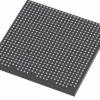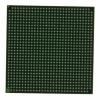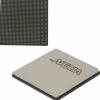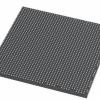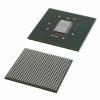Detailed explanation of power supply design of Xilinx FPGA
This article mainly introduces the power supply design of Xilinx FPGA , including power supply types, voltage requirements, power consumption requirements, power-on and power-on sequence requirements, and common power supply implementation schemes.
1. Voltage types and requirementsWith the development of FPGA, its voltage types are becoming more and more abundant, mainly including the following types: Processor System voltage, which mainly supplies power to the ARM
in the Zynq series SoC , including VCC_PSINTFP, VCC_PSINTLP, VCC_PSAUX, VCC_PSINTFP_DDR, VCC_PS ADC , VCC_PSPLL, VPS_MGTRAVCC , VPS_MGTRAVTT, VCCO_PSDDR, VCC_PSDDR_PLL, VCCO_PSIO, VCC_PSBATT, etc.;
FPGA Logic voltage, which mainly supplies power to the FPGA logic part, including VCCINT, VCCINT_IO, VCCB RAM , VCCAUX, VCCO, VCCAUX_IO, VBATT, etc.;
GTx Transceiver voltage, which mainly supplies power to the GTx high-speed transceivers in the FPGA part , including VCCINT_GT, VMGTAVCC, VMGTAVTT, VMGTVCCAUX, VMGTAVTTRCAL;
System Monitor voltage, mainly to supply power to the ADC of the FPGA part , including VCCADC, VR EFP;
High Bandwidth Memory voltage, including VCC_HBM, VCC_IO_HBM, VCCAUX_HBM;
VCU voltage, only available on Zynq UltraScale+ MPS oC series devices with image processing core, including VCCINT_VCU;
RF voltage, only available in Zynq UltraScale+ RFSoC series, including VADC_AVCC, VADC_AVCCAUX, VDAC_AVCC, VDAC_AVCCAUX , VDAC_AVTT, VCCINT_AMS , VCCSDFEC;
The power supply objects of the above various voltages are different, and the accuracy requirements are also different. For FPGAs with different architectures, the voltage accuracy requirements are also different. The ripple range varies from 2% to 5%, but the overall requirements are It is relatively high, but the current requirements are getting larger and larger. For example, VCCINT can reach a maximum of tens of amps. At the same time, various voltage values ​​are different, some can be combined, and some cannot be combined, and timing control is also required.
For Zynq UltraScale+ MPSoC (ZU+ MPSoC), Zynq UltraScale+ RFSoC (ZU+ RFSoC), Zynq 7000 (Z7), UltraScale+ (US+ includes VU+ and KU+), UltraScale (US includes VU and KU), 7 series, etc., for each type The voltage, required voltage value and accuracy are listed in the following table:
| Voltage type | ZU+ MPSoC | ZU+ RFSoC | Z7 | US+ | US | 7 Series | |
| Logic | VCCINT | 0.85(3%) 0.72(3%) 0.9(3%) |
0.85 (3%) 0.72 (3%) |
1.0(3%) 0.95(3%) |
0.85(3%) 0.72(3%) 0.9(3%) |
0.95 (3%) 0.9 (2.2%) KU 1.0 (3%) |
1.0(3%) 0.9(3%) 0.95(2%) The three series of AKV are different |
| VCCINT_IO | 0.85 (3%) 0.9 (3%) |
0.85 (3%) | × | 0.85 (3%) 0.9 (3%) |
0.95 (3%) 0.9 (2.2%) KU 1.0 (3%) |
× | |
| VCCBRAM | 0.85 (3%) 0.9 (3%) |
0.85 (3%) | 1.0(3%) 0.95(3%) |
0.85 (3%) 0.9 (3%) |
0.95(3%) 1.0(3%) |
1.0(3%) 0.9(3%) 0.95(3%) The three series of AKV are different |
|
| VCCAUX | 1.8 (3%) | 1.8 (3%) | 1.8 (5%) | 1.8 (3%) | 1.8 (5%) | ||
| VCCO | √ | √ | √ | √ | √ | √ | |
| VCCAUX_IO | 1.8 (3%) | 1.8 (3%) | 1.8 (5%) 2.0 (3%) |
1.8 (3%) | 1.8(5%) 2.0(3%) A7No |
||
| VBATT | √ | √ | √ | √ | |||
| GTx | VCCINT_GT | × | × | × | 0.85(3%) 0.9(3%) Only for VU+ |
× | × |
| VMGTAVCC | 0.9 (3%) | 0.9 (3%) | 1.0(0.97~1.08) 1.05(1.02~1.08) |
0.9 (3%) | 1.0(3%) 1.03(3%) VU |
1.0(0.97~1.08) 1.05(1.02~1.08) |
|
| VMGTAVTT | 1.2 (3%) | 1.2 (3%) | 1.2 (2.5%) | 1.2 (3%) | 1.2 (2.5%) 1.23 (2.4%) VU |
1.2 (2.5%) | |
| VMGTVCCAUX | 1.8 (3%) | 1.8 (3%) | 1.8 (2.7%) | 1.8 (3%) | 1.8 (2.7%) | 1.8 (2.7%) | |
| VMGTAVTTRCAL | 1.2 (3%) | 1.2 (3%) | 1.2 (2.5%) | 1.2 (3%) | 1.2 (2.5%) 1.23 (2.4%) VU |
1.2 (2.5%) | |
| System Monitor | VCCADC | 1.8 (3%) | 1.8 (3%) | 1.8 (5%) | 1.8 (3%) | 1.8 (5%) | |
| VREFP | 1.25 (4%) | 1.25 (4%) | 1.25 (4%) | 1.25 (4%) | 1.25 (4%) | ||
| Processor System | VCC_PSINTFP | 0.85 (5%) 0.9 (3%) |
0.85 (5%) | VCC_PSINT(1.0(5%)) | |||
| VCC_PSINTLP | 0.85 (5%) 0.9 (3%) |
0.85 (5%) |


